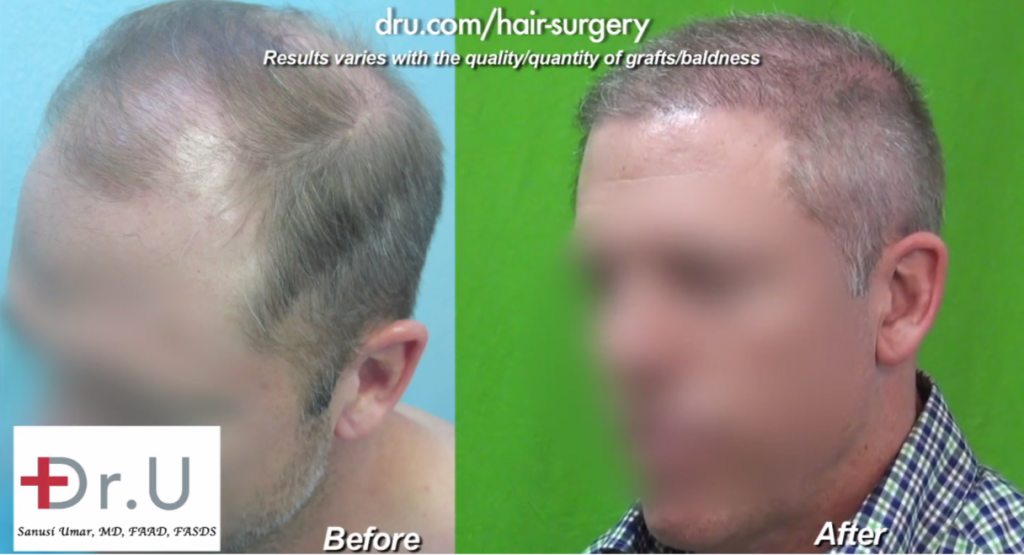In general, most people define a successful hair transplant procedure as being able to produce amazing, coverage. One would expect to see a strikingly positive difference in a person’s final appearance, compared to how they looked before their surgery. When ideal coverage becomes a challenge with head hair supplies, a hair transplant using beard hair may be an approach to consider.
Los Angeles hair restoration surgeon Dr. Umar helps his patients understand that extent of coverage which can be achieved will depend on how many donor grafts are able to be harvested from the scalp. And in some cases, the number of usable follicles has already been depleted by extensive baldness or prior surgeries.
In these situations, individuals are often given the advice to shave the entire head or wear a hairpiece. Yet, many still prefer the idea of benefitting from a hair transplant procedure, even though they may not be considered candidates by standard clinics.
Los Angeles Hair Restoration Using Beard Hair
Thanks to newer advances in FUE hair restoration by Dr. Umar, achieving desired forms of coverage, even with limited head donor grafts is now a realistic and attainable goal. When the right caliber of beard hair is available from the same patient, these follicles can be harvested and repurposed to augment the existing donor supply.
Since beard hair tends to grow prolifically on the face and neck, this graft type can provide large graft quantities to reverse hair loss in extremely challenging cases such as:
- Severe baldness (Norwood 6-7)
- Hair transplant repair for past surgery errors
The Need For Specialized Beard Hair Extraction Devices
Beard hair grows from the skin at much sharper angles compared to head hair. Therefore, they require more specialized and advanced FUE punches in order to safely extract these follicles.
While regular FUE punches are sufficient for removing hair on the scalp, they are less adept at following hair that grows less straight and at sharper angles in order to surround the follicle.
Dr. Umar is regarded as a top Los Angeles hair restoration surgeon because of his ability to help patients benefit from a hair transplant using beard hair. He engineered his intelligent Dr.UGraft ™ technology with special features that have the innate ability to harvest any hair angulation. This provides a reliable means for harvesting healthy, robust grafts that can then survive long term in the recipient area.
Hair Transplant Using Beard Hair For Los Angeles Hair Restoration Patients

Dr. Umar’s work in hair transplant surgery using beard hair has been published in esteemed medical journals. Additionally, he has developed an extensive track record of successful and life-changing patient outcomes, including cases that would have otherwise been regarded hopeless using head hair alone.
The use of beard hair has undoubtedly been a pivotal game changer for many individuals who can now walk through life with renewed confidence and put their past struggles with hair loss behind them.
To speak to Dr. Umar about undergoing a hair transplant procedure using beard hair, click this button to sign up for a complimentary online consultation.
Frequently Asked Questions – Hair Transplant Using Beard Hair
If my beard hair is a different color compared to my head hair, can I still undergo a hair transplant procedure with these follicles?
Your beard hair will continue to behave the same once transplanted into the head. However, the difference in color between your beard hair and head hair does not prevent you from being a candidate for this type of procedure. The use of dyes can be used to create a uniform hair shade.
Can I still grow out a beard or facial stubble after a hair transplant where follicles were removed from my face and neck?
Yes. Dr. Umar harvests grafts diffusely, as opposed to exhausting one area before moving to another, which would create noticeable empty spots. This approach keeps the option open for patients to continue sporting a beard or facial stubble after their procedure.
Further Reading

